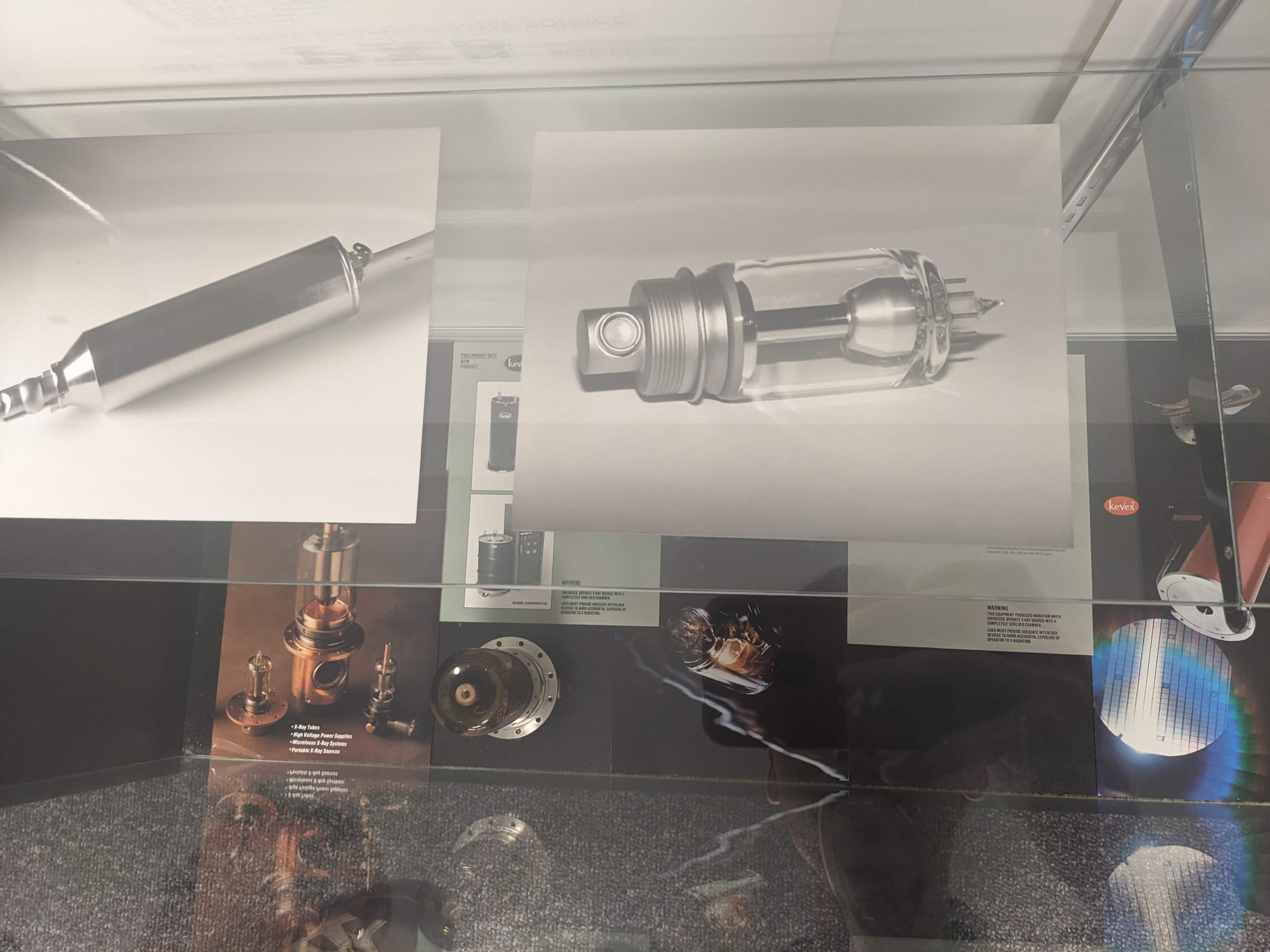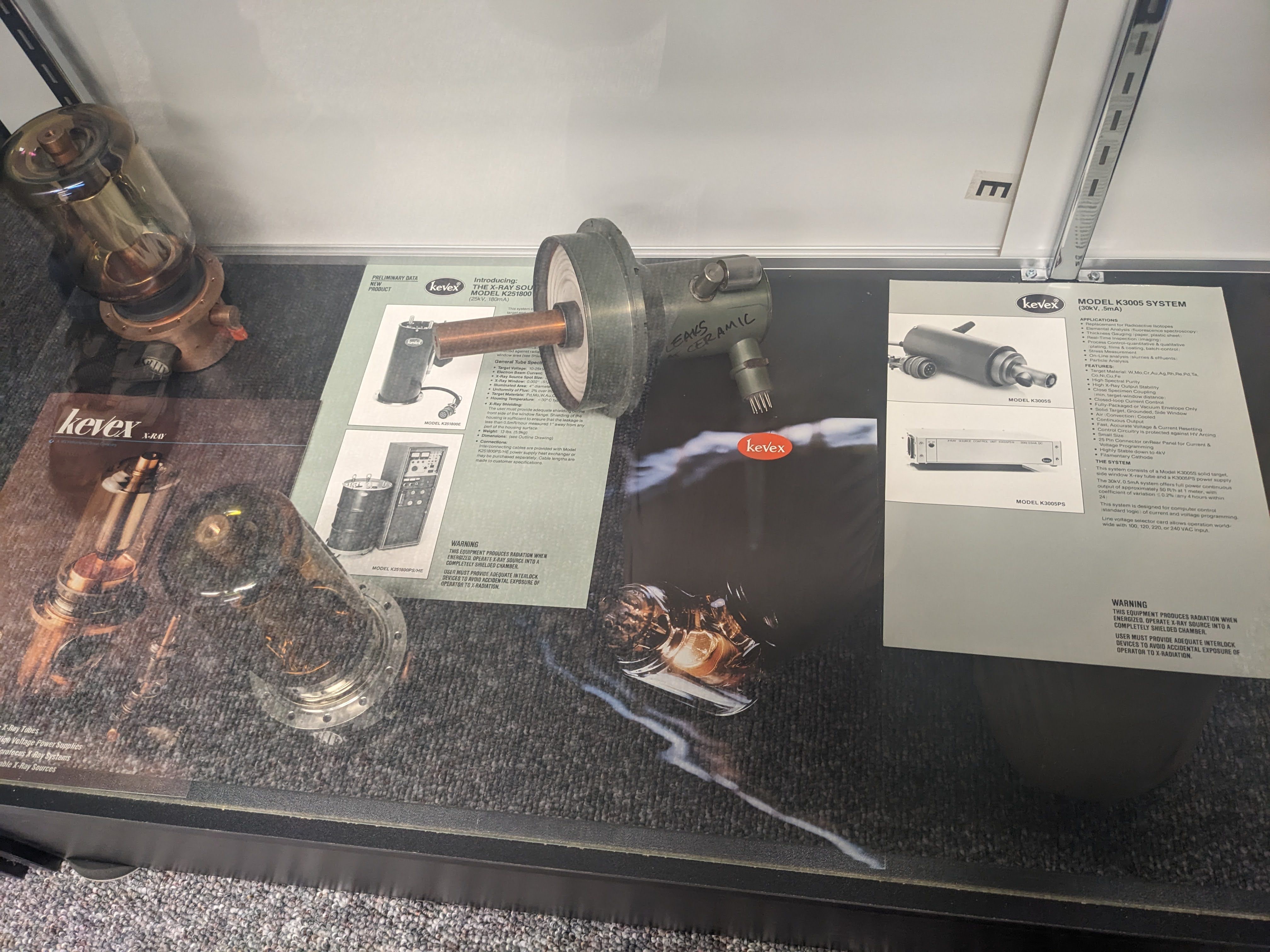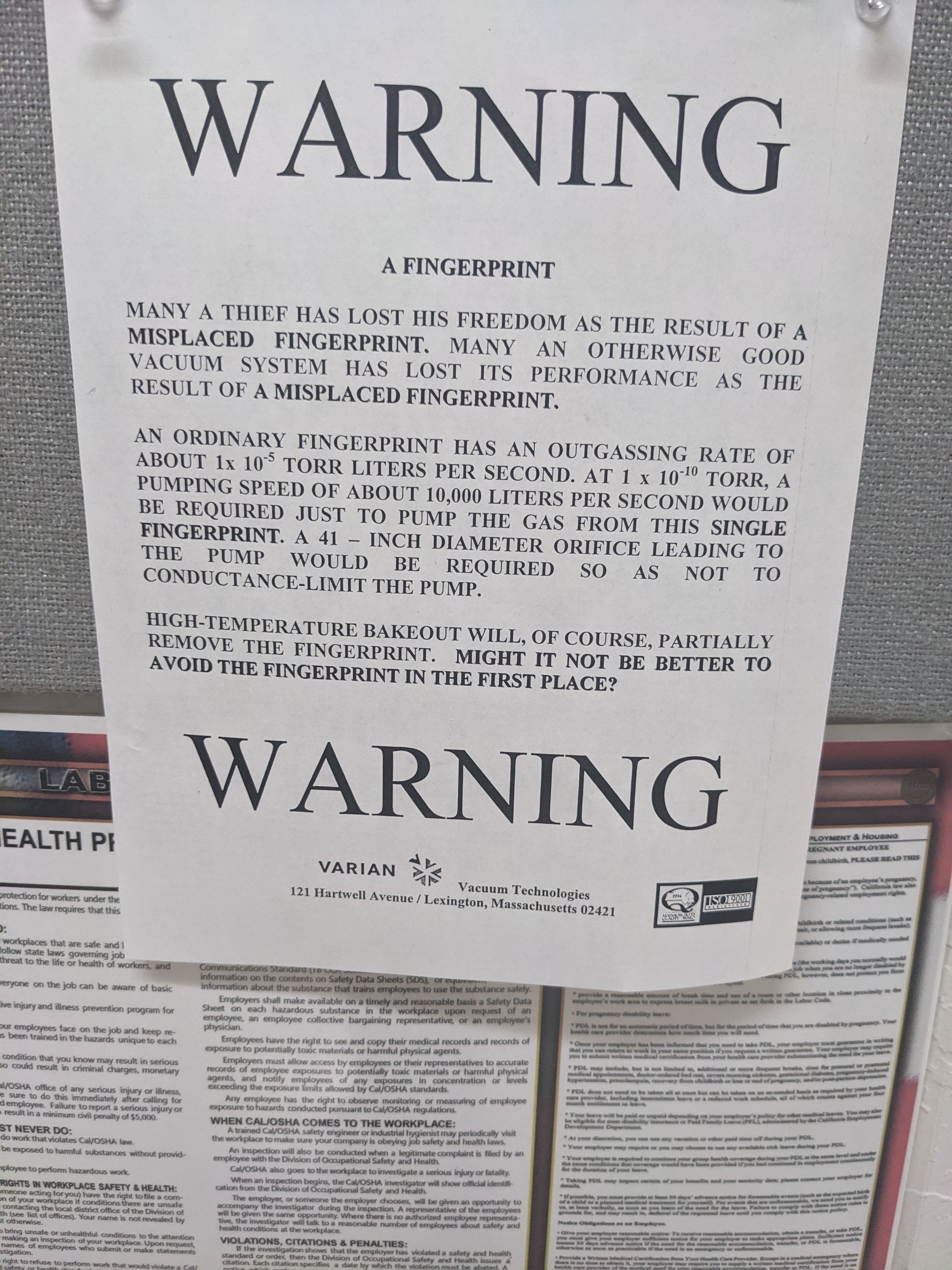Once upon a time, there was a company called Watkins-Johnson. It made microwave tubes and other microwave devices, mostly. But also equipment for electronic warfare, antennas, and semiconductors. Some of that equipment included technology involved in producing X-rays. And after a bit of a spinoff, that technology would become known as Kevex.


KEVEX. It was the place to be in the 80s and 90s if you were in the land of x-ray --- so popular that in the early 2000s it got bought by Thermo-electron corporation, becoming Thermo-Kevex tubes. And then with the merger of fisher scientific, simply Thermo-Fisher tubes. Known especially for being small and portable: In fact, that's what the PXS in the PXS-925 stands for: Portable X-Ray Source.



How do I know all this? I got a tour!

That there is John, X-Ray engineer of 19 years and very gracious host. The trip was borne out of my very long quest to obtain some basic information on the tube for our system to be able to safely drive and maybe service them and such. Now I'm not crazy enough to fly out to California just for this, but I WAS going there for work anyway, so why not stop by?

*(Warning: Incorrect info in the next paragraph)*
I wish I could show you all of the AWESOME things I saw. This is not a factory where they put a couple of components together and slap a label on them. This was the real deal. They have a glassblower who makes the tubes BY HAND. (Out of a particular brand of shot glasses, I thjnk)? The cathodes come from the guy who owns Cathode.com. Gas is vacuumed out of oil, contaminants are baked out in big ovens, spot size is checked with intensifier screens. I wore a film badge. I learned a ton, I think, not that I really remember enough in detail to explain it. It was all one big x-ray factory blur, a Disney World for x-ray nerds.
But how about one tidbit --- how to test if, for the dead source at my friend's wood shop, whether it's the tube or the high voltage source that's bad. Stand the source up on its end, vertically, "so the oil doesn't leak out". Pull out the tube (you can do this, apparently), and then slowly, carefully, raise the high voltage up. If it still goes up, the HV is good, the tube was bad! Otherwise, the HV is bad, the tube was good! Good luck assembling it back together without air bubbles, but at least now you know!
Oh, and don't raise the HV too fast or you might get a room full of oil.
*Update with correction: John has informed me that they do NOT make the glasses out of shot glasses! It's blown there but the material is from a major supplier of scientific glass. And that the cathode.com guy is just a friend, also local and part of the unique ecosystem of businesses that made the factory possible.
 Ahron Wayne
Ahron Wayne
Discussions
Become a Hackaday.io Member
Create an account to leave a comment. Already have an account? Log In.